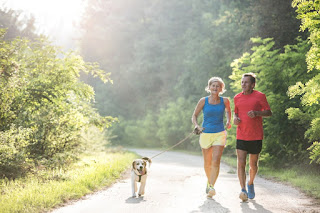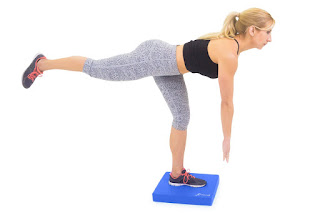When it comes to the nutrition habits of Olympians, Michael Phelps’s 12,000 calorie daily consumption inevitably enters the discussion. Do athletes train really that hard? Can someone actually eat that much food? Phelps certainly trained hard (as all Olympians do) and likely expended and consumed more than 10,000 calories during certain training periods, but fueling like an Olympian does not require a 12,000-calorie meal plan. Rather, it requires adequate energy, consistency, periodization, safe supplementation and following the guidance of the USA High Performance Team.
With those factors in mind, here are five keys to fueling like an Olympian:
1. Consume Adequate Energy (food is fuel)
Daily energy expenditure differs based on sport, training phase, sex, body weight and body-composition goals, but is typically in the range of 4,000 to 6,000 calories. Olympic athletes require consistently high intakes of macro- and micronutrients, so fad diets are not part of the equation. Any athlete touting the benefits of keto, intermittent fasting or Paleo likely will not compete at the Olympics. These diet plans have their application among the public, but any strict diet will provide inadequate energy and nutrients for an elite athlete.
An athlete’s dietary preferences and intakes vary depending on their training schedule and intensity of exercise, but nearly every Olympic athlete follows a relatively high-carbohydrate diet (on average 8-12 grams per kg of body weight). This supplies adequate fuel for someone training six hours per day.
To keep their energy levels up for the high volume of training they do, athletes must consume nutrient- and calorie-dense foods, which contain significant amounts of vitamins, minerals and calories for their volume. As daily energy needs increase beyond 4,000 calories, healthy fats (e.g., nuts, seeds, avocados, olive oil) are added in as they are more calorically dense than carbohydrate or protein.
2. Consistently Eat Well (food is more than fuel)
Athletes often ask, “What is the best food to eat before (or during) a competition?” The answer: “Whatever you have used during training and practice.”
Consider that Olympic athletes often train their entire lives for one moment. The foods, beverages and supplements consumed during the years and months leading to that moment contribute significantly more to performance than the foods they eat on competition day. An individualized and consistent nutrition program contributes to speed, strength and power, recovery, weight management, inflammation control, sleep and cognitive health.
The US Olympic and Paralympic Committee Training Center (USOPCTC) cafeterias offer nutrient-dense, whole-food options at each meal, including a salad bar, two starch options, two protein options, two non-starchy vegetable options and a soup. Cafeterias also offer grab-and-go yogurts, protein shakes and energy/protein bars. The goal is to provide consistent and familiar fueling options.
3. Periodize Nutrition
Strength and conditioning professionals periodize physical training programs. This involves planning out their athletes’ trainings months in advance with periods of high-intensity and high-volume training combined with planned rest. A typical macrocycle (the longest period of a training program) lasts six to 12 months for most athletes (recreational or professional). An Olympic macrocycle, however, may span four years (or five, due to the delay of the 2020 Games).
An Olympic athlete’s food and fluid intake over the course of four years should follow a similar approach. Nutrition periodization, which includes fluctuations in total calories and carbohydrate intake, varies among training cycles and even day to day. In short, athletes consume more calories and carbohydrates on heavy training days (or weeks) and fewer during light training periods.
4. Practice Safe Supplementation
Elite athletes generally use a dietary supplement at some point during training. Like energy needs, optimal supplementation practices depend on several factors, differ for each athlete and change throughout training cycles.
Olympic athletes follow very strict medication and dietary supplement requirements that are set by USADA and WADA. These requirements vary by sport and competitive season. Regardless, every single supplement ingested by an elite athlete—even conventional supplements such as multivitamins and protein powders—should have third-party verification from reputable companies such as NSF-Sport and Informed Choice/Sport. This process assures that products contain the amounts of ingredients listed on the label and are free of banned substances.
5. Follow the Guidance of USA Nutrition Team
Team USA athletes have varying energy needs, preferences and practices, which sport dietitians must consider when designing nutrition plans. For example, some athletes prefer light pre-workout meals with heavy post-workout spreads, while others can tolerate exercising on a fuller stomach and consume substantial pre-workout meals. Other athletes may prefer to fuel more during practices and workouts. If an athlete consumes adequate energy throughout the day (a 12-16-hour feeding window) they minimize risk of developing relative energy deficiency in sport syndrome (RED-S).
Some sports also allow for easier during-event fueling; for example, road cycling permits food and beverage storage and the use of one hand. By contrast, wrestling makes eating during a practice difficult. Therefore, fueling during non-practice hours may be more pertinent to a wrestler than a cyclist.
While sport dietitians generally do not promote a particular diet plan, many athletes have dietary limitations for personal, spiritual or allergy-related reasons. Dietitians support these restrictions by providing alternatives and/or recommending supplements to prevent energy and nutrient deficiencies.
“Stick with the basics … and do them well,” might be considered the mantra of Team USA Sport Dietitians. The Olympian meal plan isn’t fancy—it necessitates real food (lots of it) on a consistent basis. Travel requires foresight and planning to incorporate familiar foods and safe supplementation. Lastly, the 5-year overall healthy diet plan contributes more significantly to gameday performance than a single pre-game meal.



